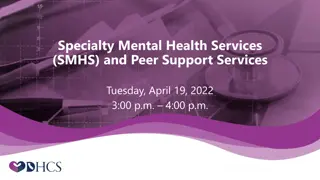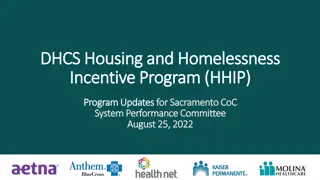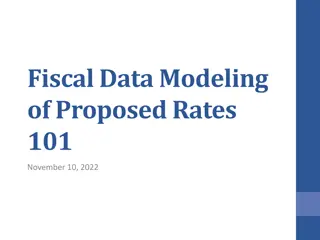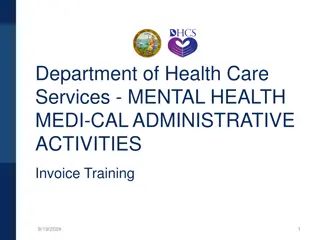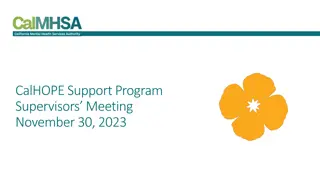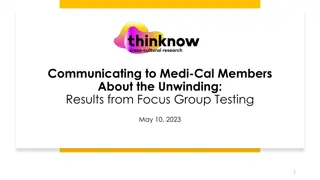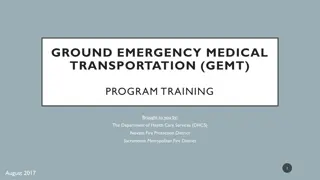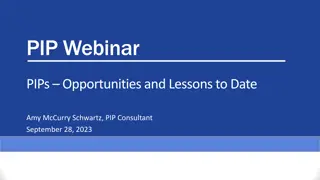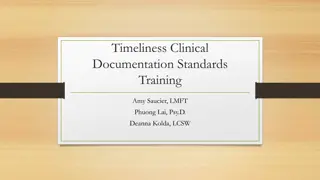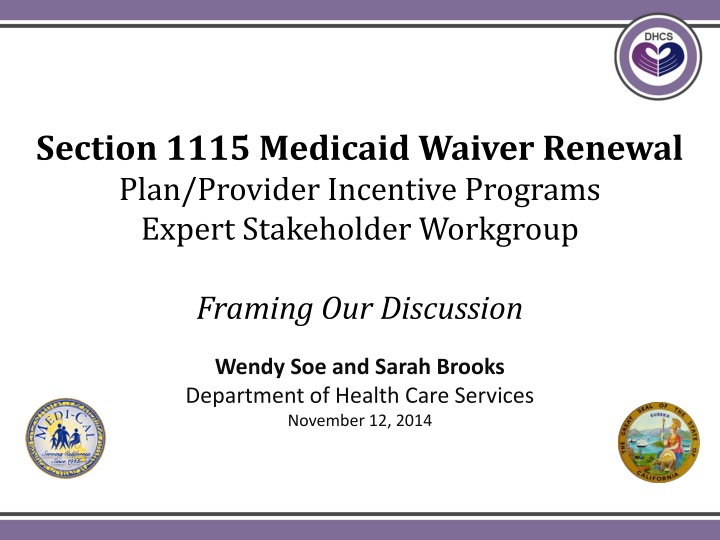
Medicaid Waiver Renewal Plan and Provider Incentive Programs Discussion
Explore the importance and process of Section 1115 Medicaid Waiver Renewal Plans, focusing on California's Bridge to Reform Waiver. Learn about the shared goals with CMS, objectives to enhance healthcare delivery, and innovative approaches for whole-person care. Discover concepts such as shared savings payments, workforce development, and safety net payment reforms to improve the Medicaid program.
Uploaded on | 2 Views
Download Presentation

Please find below an Image/Link to download the presentation.
The content on the website is provided AS IS for your information and personal use only. It may not be sold, licensed, or shared on other websites without obtaining consent from the author. If you encounter any issues during the download, it is possible that the publisher has removed the file from their server.
You are allowed to download the files provided on this website for personal or commercial use, subject to the condition that they are used lawfully. All files are the property of their respective owners.
The content on the website is provided AS IS for your information and personal use only. It may not be sold, licensed, or shared on other websites without obtaining consent from the author.
E N D
Presentation Transcript
Section 1115 Medicaid Waiver Renewal Plan/Provider Incentive Programs Expert Stakeholder Workgroup Framing Our Discussion Wendy Soe and Sarah Brooks Department of Health Care Services November 12, 2014
Section 1115 Medicaid Waivers Allow states flexibility to design demonstration projects that promote the objectives of the Medicaid program Typically approved for 5 years; States may submit request for waiver renewal for 3 -5 years Must be budget neutral Integrity Service Accountability Innovation 2
CA BTR Waiver California s Bridge to Reform Waiver (2010-2015) Current Waiver sunsets on October 31, 2015 Waiver renewal request must be submitted to the Centers for Medicare and Medicaid Services (CMS) at least 6 months before the end of the current waiver Integrity Service Accountability Innovation 3
2015 Waiver Renewal Initial Concepts Integrity Service Accountability Innovation 4
Purpose of Section 1115 Medicaid Waiver Renewal Shared Goals with CMS To further delivery of high quality and cost efficient care for our beneficiaries To ensure long-term viability of the delivery system post-ACA expansion To continue California s momentum and successes in innovation achieved under the Bridge to Reform Waiver Integrity Service Accountability Innovation 5
Objectives Strengthen primary care delivery and access Avoid unnecessary institutionalization and services by building the foundation for an integrated health care delivery system that incentivizes quality and efficiency Address social determinants of health Use California s sophisticated Medicaid program as an incubator to test innovative approaches to whole-person care Integrity Service Accountability Innovation 6
Federal/ State Shared Savings Payment/ Delivery Reform Incentive Payments Workforce Development Initial Waiver Concepts Shelter for Vulnerable Populations Safety Net Payment Reforms FQHC Payment/ Delivery Reform CCS Program Redesign Successor DSRIP Integrity Service Accountability Innovation 7
Plan/Provider Incentives Integrity Service Accountability Innovation 8
Current Incentive Structures Auto-Assignment Incentive Program (default algorithm) http://www.dhcs.ca.gov/provgovpart/Pages/MMCDAAIncentive.aspx Assigns beneficiaries who do not choose a Medi-Cal managed care health plan (MCP) to an MCP An assignment percentage is calculated for all MCPs (non-COHS) based on a combination of safety net and HEDIS measures http://www.dhcs.ca.gov/provgovpart/Pages/MMCDAAIncentive.aspx Medi-Cal Managed Care Health Plans (MCPs) A majority of MCPs have implemented pay for performance incentive programs Type, structure and funding vary by MCP Integrity Service Accountability Innovation 9
Current Incentive Structures 3 Cal MediConnect (California s duals demonstration) To incentivize high quality care and quality improvement, a portion of the capitated rate paid to Cal MediConnect plans will be withheld each year of the demonstration 1% - Year 1 2% - Year 2 3% - Year 3 The withheld amounts will be repaid retrospectively subject to participating plan performance consistent with established quality benchmarks These benchmarks are based on a combination of certain core national quality withhold measures, as well as State-specified quality measures Integrity Service Accountability Innovation 10
Current Incentive Structures 2 Cal MediConnect Year 1 Quality Withhold Measures: Submission of encounter data as required Completed HRAs within 90 days Beneficiary input on program management and enrollee care Access to appointments & needed care Behavioral Health Shared Accountability Process Measures Percent of enrollees with documented discussions of care goals Ensuring physical access to buildings, services and equipment Percent of members who have an IHSS case manager and have at least one case manager contact during the measurement year Integrity Service Accountability Innovation 11
Current Incentive Structures 4 Cal MediConnect Years 2 & 3 Quality Withhold Measures: Hospital readmissions within 30 days Annual flu vaccination Follow-up after a mental health-related hospitalization Screening for clinical depression & follow-up Reducing the risk of falling Controlling blood pressure Diabetes medication adherence Reduction in emergency department use for seriously mentally ill and substance use disorder enrollees Discussing care goals with enrollees IHSS case manager contacts Integrity Service Accountability Innovation 12
Current Incentive Structures 5 County Average Rate Setting Implemented to incentivize cost effectiveness in 2-plan and GMC counties Prior to implementation in 2011, each plan s capitation rate was based 100% on the plan s own cost experience. Data revealed significant differences within a county in terms of plan costs and therefore plan rates. DHCS implemented incorporating into the final plan rate a component that was based on a risk-adjusted county average rate In 2011, 20% of the final rate was based on a risk-adjusted county average, with the remainder based on plan-specific costs. The percentage has increased over time and is currently 50%. By including the risk-adjusted county average in a plan s rate, plans that are lower cost (accounting for differences in population risk) are rewarded and plans with higher cost are penalized, therefore incentivizing plans to be as cost-effective as possible Integrity Service Accountability Innovation 13
Potential Incentive Constructs DHCS to Medi-Cal managed care health plans (MCPs) MCPs to plan providers Under the new Waiver, several different incentive constructs are possible MCPs to county behavioral health Pay for performance Shared savings/Accountable care arrangements Integrity Service Accountability Innovation 14
Questions / Comments: WaiverRenewal@dhcs.ca.gov Integrity Service Accountability Innovation 15



